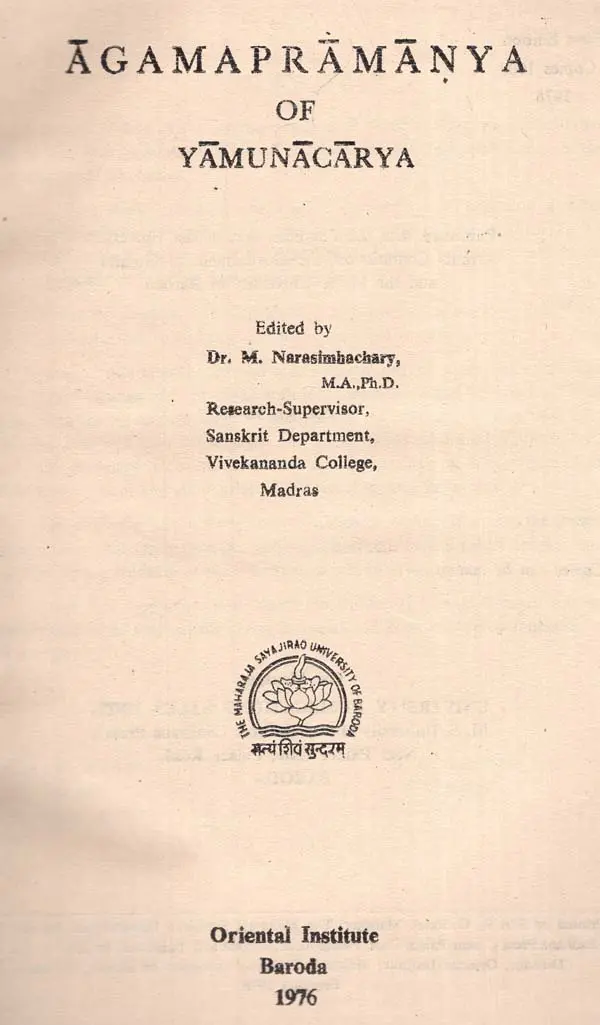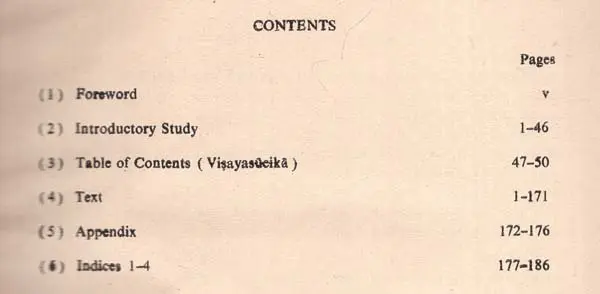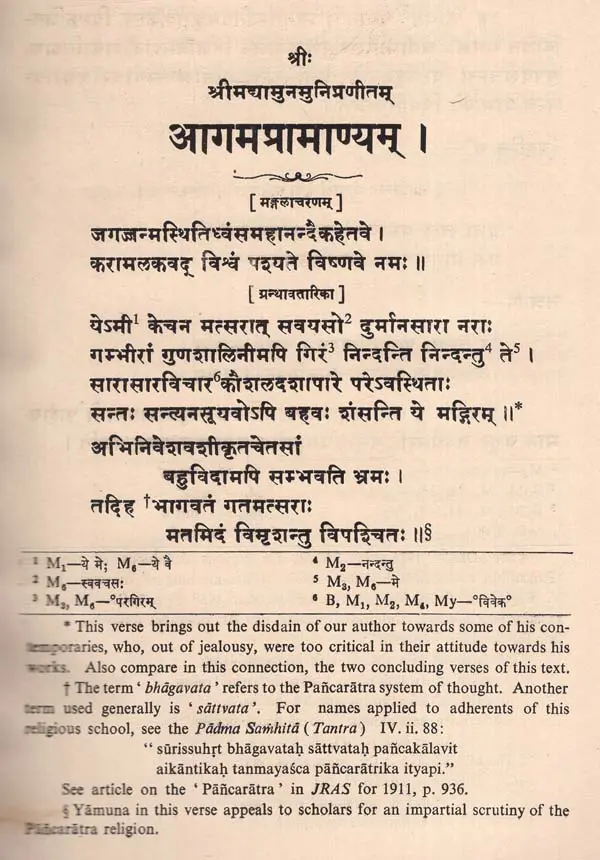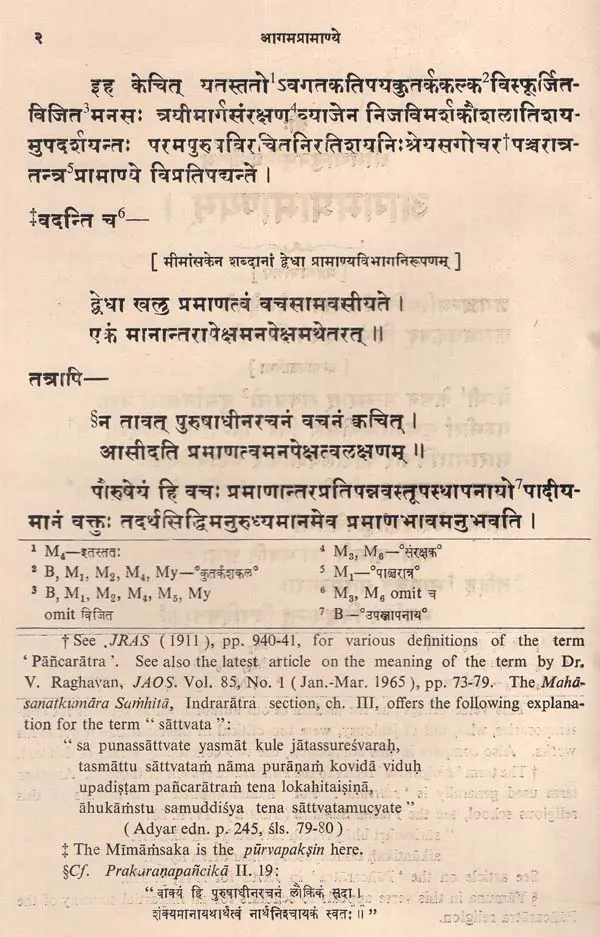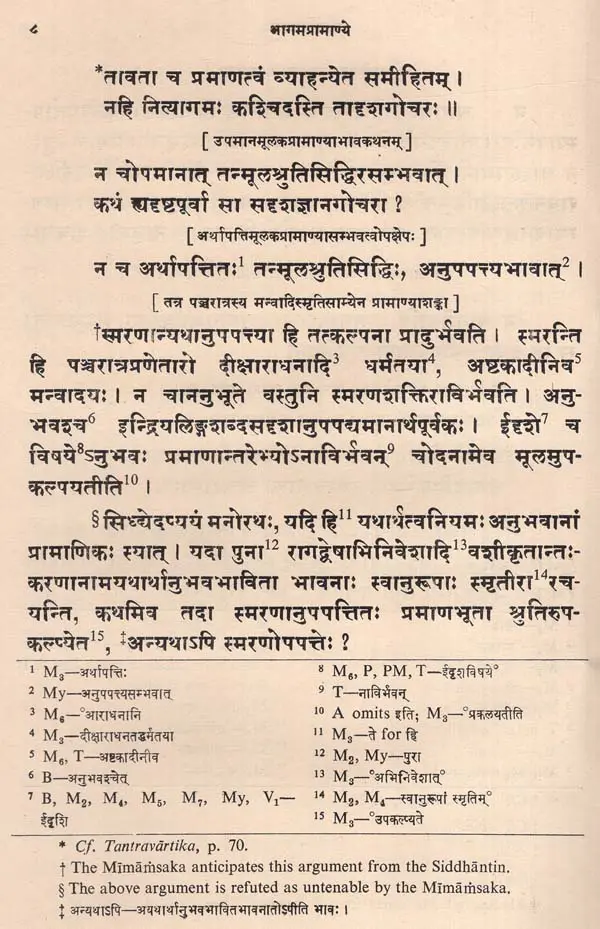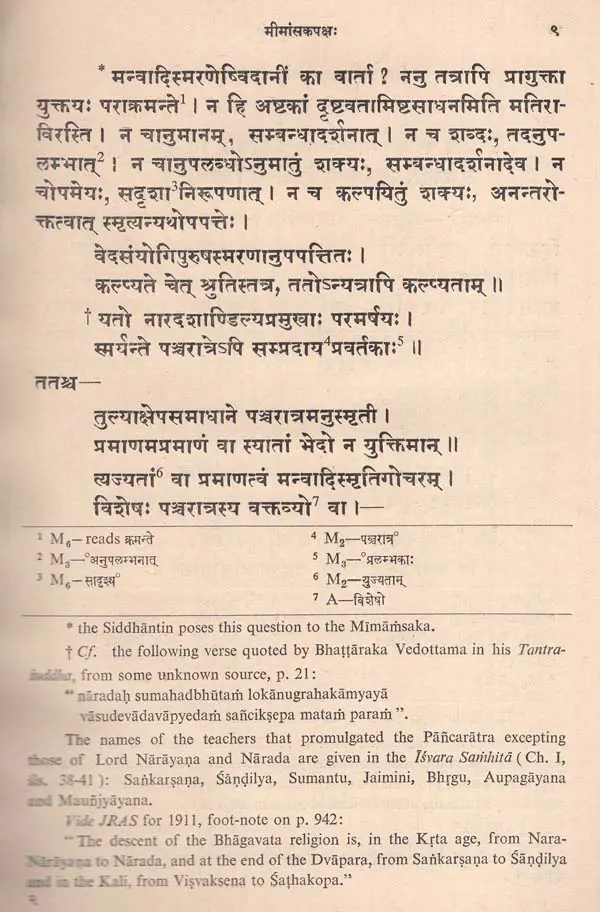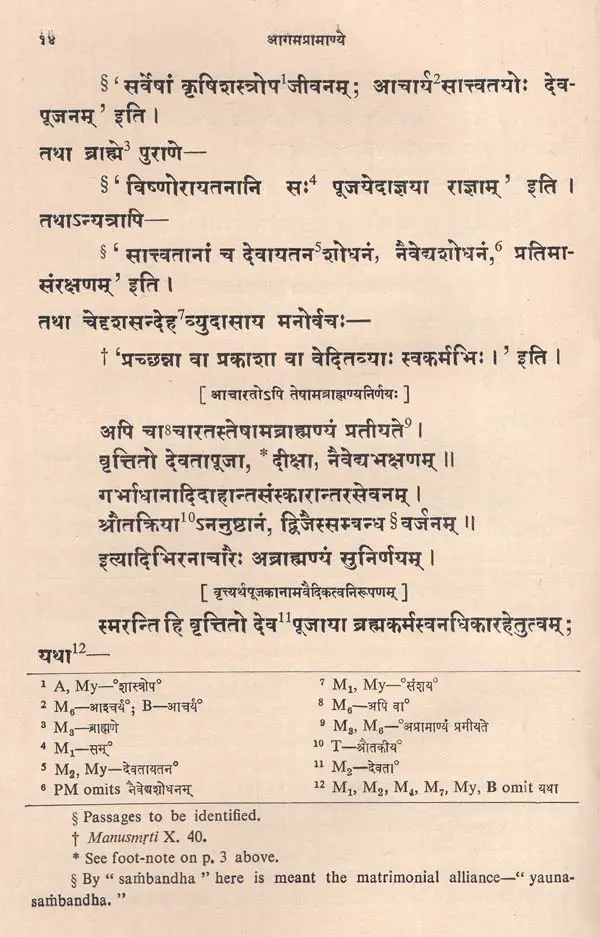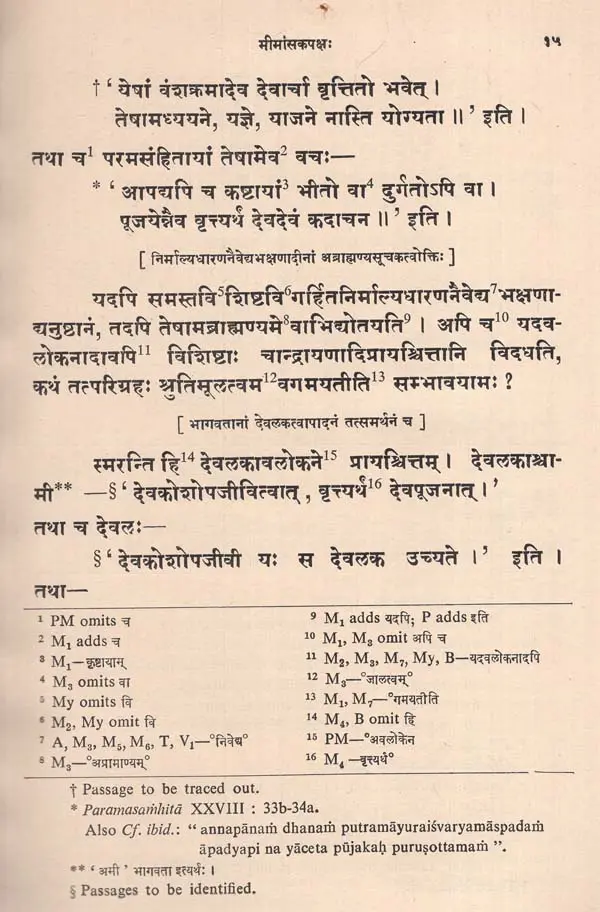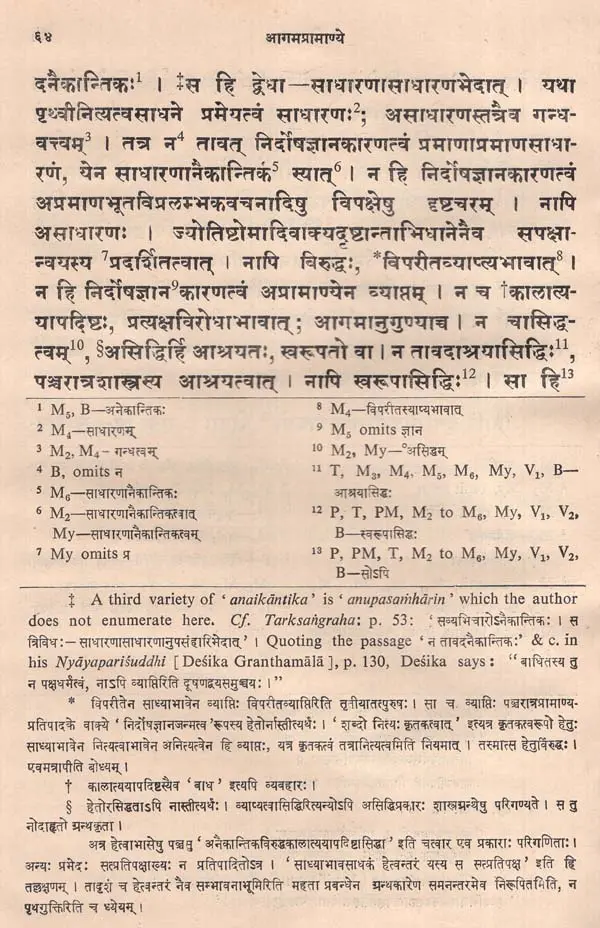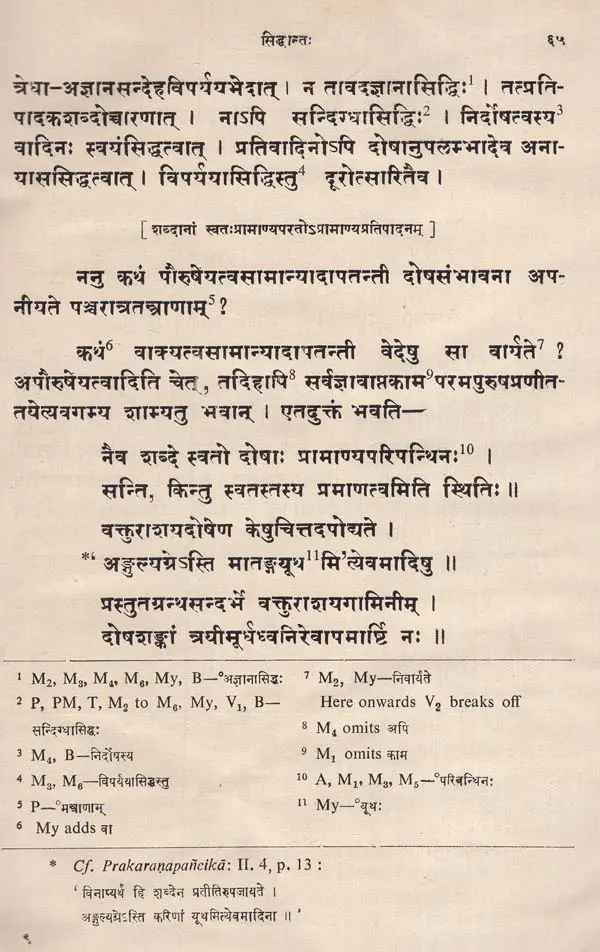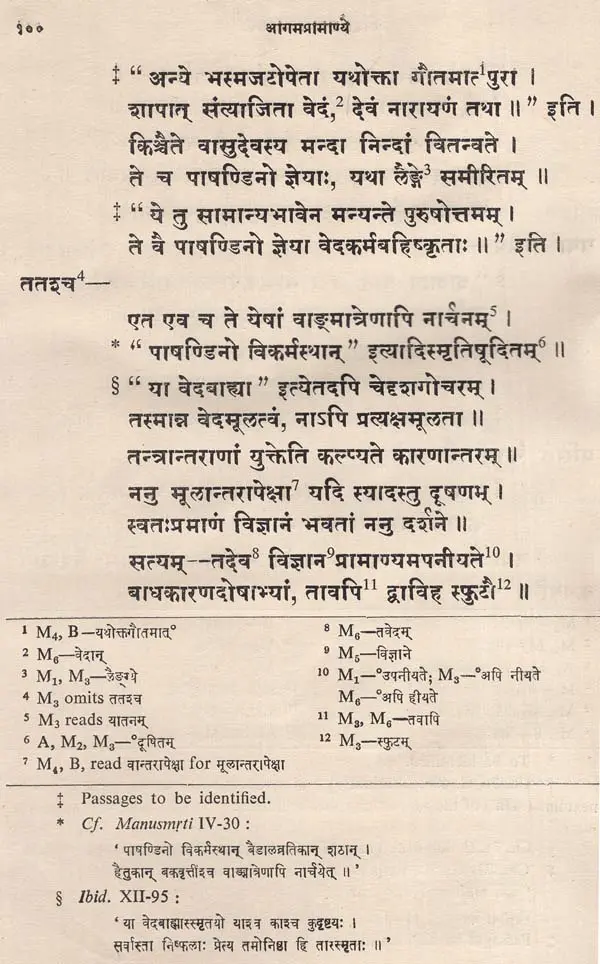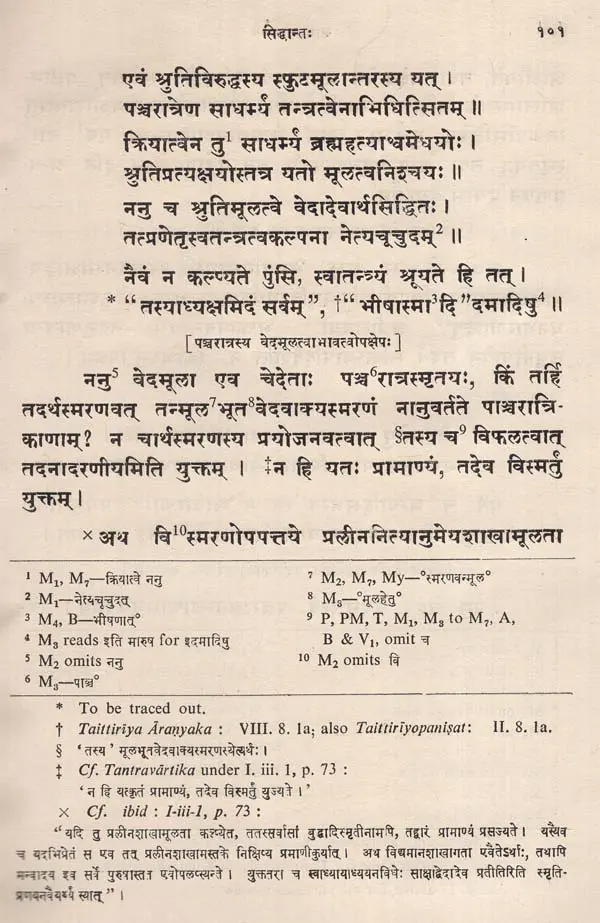
Agamapramanya Of Yamunacarya (An Old And Rare Book)
Book Specification
| Item Code: | UAQ809 |
| Author: | A.N. Jani And M. Narasimhachary |
| Publisher: | Oriental Institute, Vadodara |
| Language: | Sanskrit Only |
| Edition: | 1976 |
| Pages: | 183 |
| Cover: | HARDCOVER |
| Other Details | 10.00 X 6.80 inch |
| Weight | 510 gm |
Book Description
A critical edition of the Agamapramanya of Yamunaicārya, an authoritative work of the Visistädvaita School of Vedanta, is now being published in the Gaekwad's Oriental Series.
The Višistadvaita school of Vedanta is influenced by the Pañcaratra Agamas. In the Agamapramanya Yamunacarya, the grand teacher of Ramanujacārya, has established the Vedic character of the Pañcaratra Agamas refuting all arguments advanced against their being considered as such.
Dr. Narasimhachary has tried his level best to edit the work critically with variants and informative and explanatory notes wherever necessary.
In the Introduction the learned editor has thoroughly discussed all relevant topics about Agamas and about the author Yamunācārya and his works. While dealing with the Agamapramanya he has treated the Pañcarätra Agamas, their Vedic character and their influence on the Visistadvaita school of Vedanta. He has further discussed the influence of the Agamapramanya on later writers of the Visistadvaita school and summarised all topics discussed in the text.
Agamapramnya has already been published thrice; however, the present critical edition will surely be welcomed and appreciated by Sanskrit Scholars and especially by the students of the Visstadvaita school of Vedanta.
I take this opportunity to thank the University Grants Commission and the Government of Gujarat for giving financial aid towards the publication of this volume.
B. J. SANDESARA
Director
Oriental Institute,
Baroda February 18, 1975
The Agamapamanya of Set Yamunacarya, the great predecessor and grand teacher of Ramanuja, occupies an important place in the Vitodraita erature. It is devoted to the establishment of the Vedic character of the Pacardira litera sure which forms one of the two main branches of the Srivaisnava religion, the other one being the Vaikhanasa. The Pancararra literature was once the target of severe criticism by the Mimamsakas that preceded Yamuna. This refutation became more pronounced when the great Sankara in his commentary on the Brahmastra, questioned the philosophical basis of these texts. It is in reply to all these doubts and criticisms that loomed large in the field that Yamuna wrote the Agamapramanya. Here he took up the question of the Pancardira being as valid as the Vedas themselves. Though short, this is perhaps the only early work solely devoted to this question. Here he answered the charges leveled by the Mimäthsakas as well as the Advaitins against the Pañcaratra and tried to establish that the Bhagavata religion, as it is also known, was authoritative in theory and practice. But even this masterly work of Yamuna could not completely dispel the doubts in the field, as is shown by the emergence of two late works in support of the Agamapramanya, viz., the Tantrafuddha of Bhattaraka Vedottama and the Pancararakantakoddhara of Vadhula Varadacarya. There was of course, the far better known Palearatrarakṣa of the great Vedanta Desika.
Yamuna's defence of the Pancaratra formed the basis and the main content of Ramanuja's explanation of the Utpattyasambhava-section of the Brahmasutra. It is the Agamaprámánya that refers to another work of Yamuna, viz, the Purusanirnaya which is not available now. Vedanta Desika tells us that the sec tion of Ramanuja's Vedarthasangraha dealing with the Supremacy of Lord Vişnu is based on this lost text of Yamuna. That Yamuna was most probably the author of another work, the Kasmirágamaprámánya, which has also not come down to posterity, is known only through the Agamapramanya. Yamuna says that it establishes the revealed character of the Ekayana Sakha of the Sukla Yajurveda on which the Pancaratra-agamas are claimed to have been based.
The present attempt is to offer a critical edition and study of this important text, which has been a desideratum for long. This edition is the result of an examination of twelve palm-leaf manuscripts from different places. It was pre pared by me as a stipendiary Research Scholar in the Sanskrit Department of the University of Madras during the years 1961-63, and was submitted to the University in February, 1954. It was the first time for Agamapramanya to be subjected to a critical study. It is hoped that the English Introduction and explanatory notes along with the Indexes will add to the utility of the text.
Yamunacarya (known in Tamil as Alavandar) occupies a unique place among the Srivaisnava teachers. He was Ramanujacarya's grand teacher and Ramanuja and later writers owe a deep debt of gratitude to Yamuna and his works. When the Advaita Philosophy was widely popular and the fastraic teachings of Nathamuni, Yamuna's grandfather and the first in the list of Acaryas were just nascent, Yamuna had to play a vital role in promoting the Srivaisnava religion and philosophy. He succeeded in this task remarkably well through his works. The completion of this task of promoting the Visistädvaita was left to Ramanuja. Thus it was Yamuna that paved the way, so to say, for the great Ramanuja.
Agamapramanya of Yamuna which we have taken up for a critical edition and study, tries to establish the authority of the Pañcarātrāgamas, which form an integral part of the Visistadvaita religion and philosophy. The Visistädvaita school has three aspects: the Sanskrit scriptures owing to Vedic authority, the Sanskrit Agamas and the Psalms of the Alvars in Tamil. We are not concerned here with the first and last of these above three aspects of Visistädvaita. Of the second, viz., the Sanskrit Agamas, there are two schools: the Vaikhanasa and the Pañcaratra. Of these two branches of the Śrīvaisnava-agamas, we are concerned here only with the Pañcaratra.
Some of the leading exponents of the Visistädvaita school of thought have written upon both these aspects: the sastra deriving the Vedic authority and the Pancarătrăgamas. Among the pre-Ramanuja writers of this school whose works we have, Yamuna is the most important. His contributions cover both the Vedic and the Agamic aspects. His Gitärthasamgraha is on one of the texts of the Prasthanatraya. His Siddhitraya is an independent text linked to the Prasthanatraya. On the Agamic side, he wrote the Agamapramanya taken by us for the present study. The Kaśmīrāgamapramanya, which is referred to in the Agamapramanya,2 appears to be his own work.3
